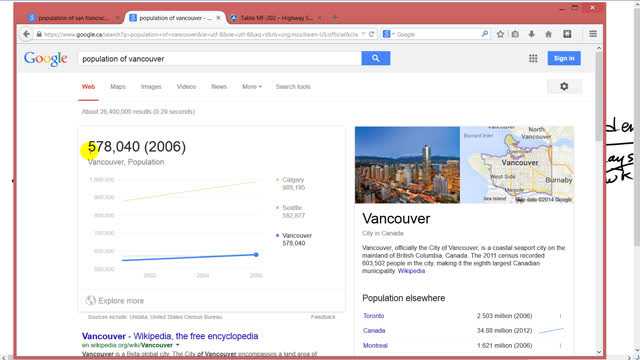
Estimate the number of dentists
- in San Francisco and
- in your town or city.

In order to watch this solution you need to have a subscription.
This is Giancoli Answers with Mr. Dychko. So you can look up on Google what the population of San Francisco is 825 thousand in the year 2012 and for Vancouver, it's 578 thousand in 2006 So take those populations and make some estimates about dentist visits. and your numbers might vary; there's other, you know, you could make an argument for that the average visit might be longer than 15 minutes for each person to a dentist; I just put 15 minutes here because, you know, hygienists typically do a lot of the time-consuming work and dentists just come in and take a peek at the mouth on to the next patient and you know, some patients will have to do procedures on and those patients will take longer but on average, the other ones will take such a short time that maybe the average is 15 minutes overall, I don't know, I'm just taking a guess. So each person maybe visits the dentist once per year so it's one visit per year per person and times by the number of people in San Francisco and 15 minutes per visit and then this is basically we are trying to figure out how many total dentist days are needed here and then multiplying that by one dentist working 48 weeks per year, five days a week. So we have one visit per person per year times the number of people times 15 minutes per visit times while each day is gonna have 8 hours— 8 working hours anyhow— and then we work that into minutes because we need to get rid of this units of minutes on the top there and we are left with, after we cancel all of these units on the opposite sides away, we are left with days per year; dentist work days per year. And then each dentist can handle five days per week times 48 weeks per year so each dentist can handle 1 dentist for every 5 times 48 days per year. And so the days here will cancel that and then the per year in the bottom here will cancel this year here and we are left with the number of dentists. It's kinda confusing to have fractions within fractions but this this year here is in the denominator of the denominator so that's why it's canceling with this thing here. So we have about 110 dentists overall in San Francisco and doing the same calculation with Vancouver's population works out to about 75 dentists.